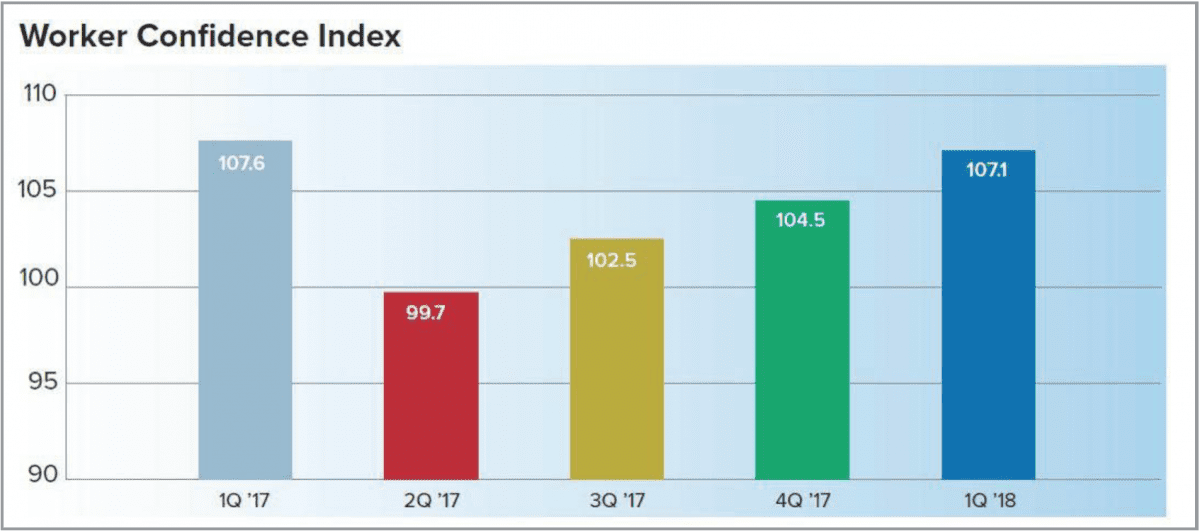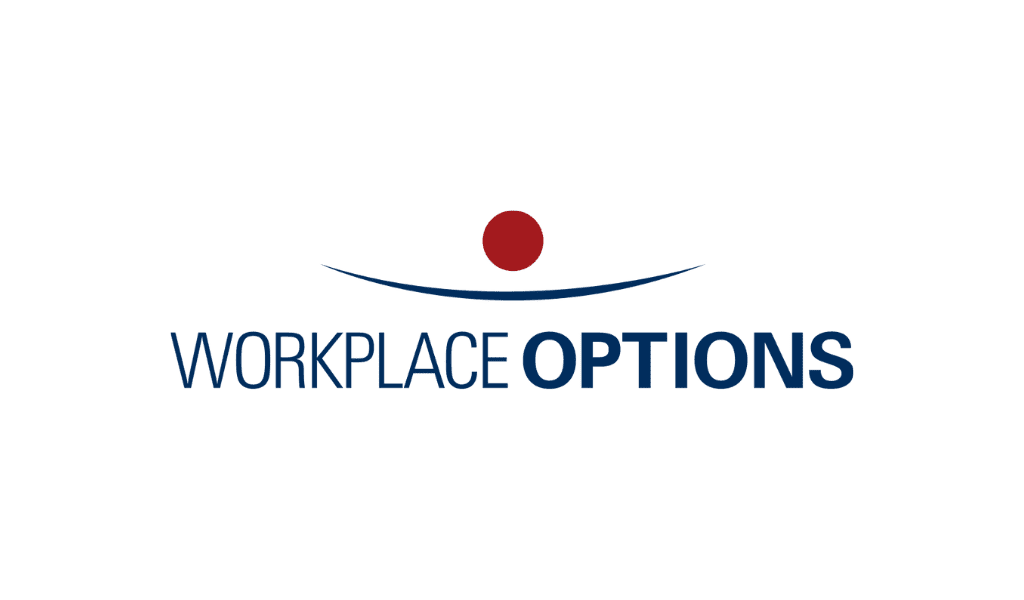2018 kicks off with higher worker confidence, driven by worker optimism about the likelihood of promotion.
By Larry Basinait
In the first quarter of 2018, the Worker Confidence Index (WCI) increased by 2.6 points for the third consecutive quarter. The WCI now stands at 107.1. Of the four elements that determine the WCI, likelihood of promotion increased the most, improving by 9.7 points. Another component, likelihood of a raise, also improved by 4.6 points. The job security and trust in company leadership indices had modest declines, but remain similar to the first quarter of 2017.
Despite low levels of unemployment in the first quarter of 2018, the job security index declined modesty for the second consecutive quarter, falling to 100.0. Concern about job loss is the most important indicator in estimating worker confidence about their current and near-term financial outlook.
Once again, females reported higher levels of confidence in their job security than males in the first quarter of 2018. Women continue to report the highest level of job security since the inception of the study. The percentage of males who felt that they would lose their job decreased slightly in the first quarter of 2018, from 15.6 percent in the prior quarter to 14.3 percent. Females’ concern over job security increased slightly, up 0.3 percentage points from last quarter to 7.7 percent. Once again, higher-income employees reported having the most job security.
Trust in company leadership declined slightly in the first quarter of 2018, though it’s been over the base index of 100 in four of the last five quarters. Workers trust management when positive company earnings are translated to greater compensation for them. Employees may feel secure when the company is doing well, but trust is most likely to be established if those positive business results result in increased compensation for all. While more than half (55.8 percent) of the youngest respondents expressed confidence in their company’s leadership in the first quarter of 2018, trust in leadership declined steadily as the age of respondents increased.
Furthermore, study results reveal that as age increases beyond 35, the belief that there will be a raise of at least 3.0 percent after the next review declines steadily. As employees get older, more and more feel that what they make today is what they will make tomorrow. Older workers tend to make more, and thus drive more consumer spending. The oldest groups of workers feel their wages have stagnated.
The WCI has correctly predicted the direction of consumer confidence for the next quarter’s end in 10 of 12 of the last quarters. The WCI and Consumer Confidence Index have both trended in the same direction for the last three quarters. The increase in the WCI in first quarter 2018 suggests that there will be a modest increase in the CCI through the following quarter.
Worker confidence remains high, driven by optimism toward promotion and the likelihood of a raise by younger workers. Employees’ confidence in job stability strengthened in the first quarter of 2018 as the U.S. unemployment rate remained a low 4.1 percent. Overall, workers feel somewhat more confident about their work situation than they did at the end of 2018, and on par with how they felt one year ago.















